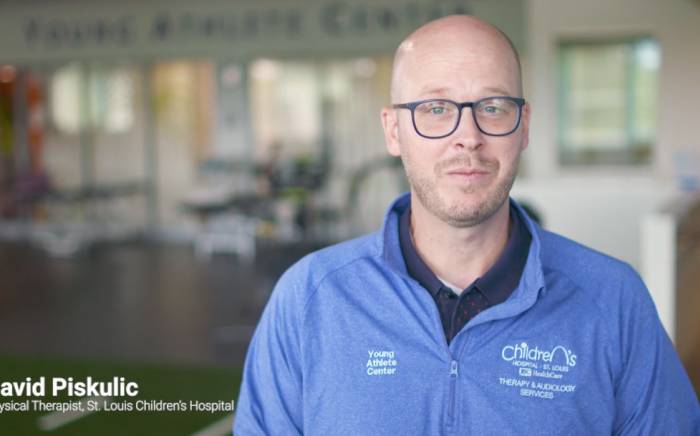Epilepsy can be caused by different things, such as a genetic disorder or a sudden head injury. Some types of epilepsy are harder to treat than others. If two or more medications haven’t helped your child’s seizure symptoms, your doctor may consider surgery.
Our nationally ranked pediatric experts perform a comprehensive surgical evaluation. This gives them information to fully understand how surgery may benefit your child. These specialized epilepsy tests also help make surgery safer, in multiple ways.
Comprehensive Epilepsy Surgery Evaluation Process
Epilepsy surgery can be life-changing for some children. But it’s not for everyone. When evaluating whether surgery may stop or improve your child’s seizures, our team considers two key factors:
- Where in the brain your child’s seizures start, known as the “epileptogenic zone”
- How this area of concern relates to important brain functions, like walking and talking, memory or visual processing
A comprehensive surgical evaluation process makes sure we consider every way surgery could affect your child, now and later in life. Here are the steps we take to evaluate whether surgery may benefit a child with hard-to-treat epilepsy.
Thorough medical evaluation
At the Pediatric Epilepsy Advanced Technologies Clinic, our epileptologists fully evaluate your child’s health. These neurologists with extra epilepsy expertise also review your child’s symptoms, diagnosis and previous treatments. You may see more than one specialist during your visit.
Your doctor will speak at length about the latest epilepsy treatment options, including types of epilepsy surgery. We won’t rush you, making sure we answer all questions you have about your child’s care.
Phase 1 diagnostic testing
Next, children who are considered a potential fit for surgery usually schedule an appointment for a video EEG in our pediatric Epilepsy Monitoring Unit (EMU). Located on the 12th floor, the EMU is equipped with specialized EEG, video and audio equipment.
Your child and a caregiver will stay overnight in a private room. We carefully place EEG electrodes on your child’s scalp. They record brainwaves while your child is awake and sleeping. Trained medical professionals closely monitor your child.
When a seizure starts, a member of our team will enter the room to check on your child and ensure their safety. A camera will record all activity and allow us to see what happens during a seizure.
This information helps us determine which area of the brain causes your child’s seizures. If diagnostic testing can pinpoint where your child’s seizures start, surgery may effectively reduce or eliminate seizure symptoms.
Your child’s doctor may also recommend advanced imaging tests (such as MRI or PET scans) or neuropsychological testing to learn more about your child’s seizures.
Multidisciplinary collaboration
Potential surgery candidates are discussed at our weekly experts’ epilepsy conference. Neurologists, neurosurgeons and other specialists talk about every detail of your child’s care. They explore all treatment options and additional diagnostic tests. We eventually come to a consensus on whether surgery may offer your child potential benefits. Meet our epilepsy specialists.
Meeting with neurosurgeon
If our team agrees that your child could benefit from epilepsy surgery, then you’ll meet with the highly experienced pediatric neurosurgeon who will perform the surgery. During this visit, the surgeon will walk you through the fine details of the procedure itself, including the surgery’s risks and benefits and possible alternatives.
We know brain surgery is a lot to consider for any child. Our doctors make themselves available to answer any questions you have, during or after this appointment.
Phase 2 diagnostic testing to plan surgery
If you decide to move forward with epilepsy surgery for your child, we may recommend further tests. These tests help our experts plan for your child’s procedure in different ways, making their surgery much safer.
Additional tests may include:
- Noninvasive imaging tests, such as:
- Functional MRI (fMRI): This test identifies the location of key brain functions that could be affected by epilepsy surgery.
- Single-photon emission computed tomography (SPECT): This test can help doctors find the spot where seizures start. It provides important details about blood flow changes that occur during a seizure.
- Diagnostic surgical procedures, such as:
- ROSA stereo EEG: This test offers more insight into where seizures are coming from inside the brain. A robotic device assists the surgeon with placing electrodes in the child’s brain in a less invasive way, using tiny incisions. Doctors from across the U.S. come to learn ROSA stereo EEG techniques from our highly skilled and experienced experts.
- Cortical stimulation studies: These allow surgeons to map out the specific area of brain tissue responsible for seizures, so we target only the problem area. These tests can be performed during surgery or using implanted electrodes while the patient is in the epilepsy monitoring unit.
- WADA tests tell doctors which parts of your child’s brain house important functions, such as memory and language.








